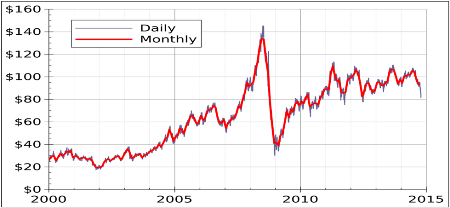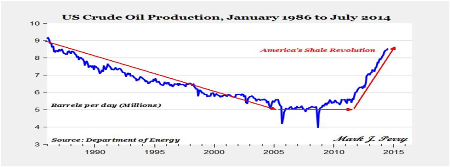The real history of fracking: Oil, bombs and civil war
Over the past twenty years, the most important and most exciting development in the United States energy sector has been hydraulic fracturing, also referred to as fracking.
This controversial drilling technique made it possible for producers to extract oil and natural gas from shale rock, a fine-grained, clastic sedimentary rock, composed of mud that is a mix of flakes of clay and tiny fragments of other minerals. This revelation sparked a veritable boom in US crude production.
In fact, the development was so significant, it made it possible for the US to become the world's largest oil and gas producer. And many speculate that it could even be key in America's energy independence in the coming years.
While there are plenty of misconceptions that surround this modern technology (it poisonous substances the drinking water, or it creates cancer), the largest is that it's actually a recent innovation.
The Real History Of Fracking
Surprisingly, fracking can be traced back to 1862. It was during the battle of Fredericksburg VA., where Colonel Edward A.L. Roberts discovered something incredible when firing explosive artillery into a narrow canal that was blocking the battleground. The breakthrough was then described as 'superincumbent fluid tamping.'
Also on rt.com US shale an 'unmitigated disaster' with industry hundreds of billions in debt - shale pioneerOn April 26, 1865, Edward Roberts obtained his very first patent, for an “Improvement” in exploding torpedoes in artesian wells. In November of 1866, Edward Roberts was awarded patient number 59,936, known as the “Exploding Torpedo.”
This removal method was executed by packing a torpedo in an iron case that contained 15-20 pounds of powder. The case was then dropped into an oil well, at a spot nearest to the oil. From there, they would blow up the torpedo by linking the top of the covering with wire to the surface area and then loading the borehole with water.
This creation boosted oil production by 1200 percent from certain wells within a week. Additionally, this new type of extraction led to the founding of Roberts Petroleum Torpedo Company, which charged $100-$200 dollars per rocket, plus a royalty of 1/15 of the profits generated from the product.
The Birth Of Modern Fracking
The very first improvement on fracking didn't occur until the 1930s, when drillers used a non-explosive liquid substitute called acid, instead of nitroglycerin. This innovation made wells much more resistant to closing, boosting productivity significantly.
Although fracking was technically born in the 1860s, the birth of modern hydraulic fracturing began almost 90 years later. In 1947, Floyd Farris of Stanolind Oil and Gas began to study the relationship between oil and gas production output, and the amount of pressurized treatment being used on each well.
This research resulted in the first experiment involving hydraulic fracturing, which occurred in Kansas in 1947. In this trial, 1,000 gallons of gelled gasoline and sand were injected into a gas-producing limestone formation with a deepness of 2,400 feet. This was then followed by an injection of a gel breaker. While this experiment failed to produce a significant production increase, it did mark the beginning of what is now known as fracking.
Also on rt.com What the frack! US shale industry sees 'another round of bankruptcies' loomingDespite the failure in the Kansa experiment, the research proceeded. On March 17, 1949, Halliburton performed two commercial experiments; one in Oklahoma and one more in Texas. These outcomes were far more successful.
After achieving speculative success in 1949, the fracking business began to explode. In the 1960s, Pan American Petroleum started to use this drilling method in Stephens area, Oklahoma. And in the 1970s, fracking began to take off in the Piceance Basin, the San Juan Basin, the Denver Basin, and the Green River Container.
This extensive use even garnered the interest of President Gerald Ford. In his 1975 State of the Union address, President Ford promoted the advancement of shale oil sources as part of his overall energy plan to reduce foreign oil imports.
Welcome The Shale Oil Boom
The fracking revolution is nothing new. It has been around for over a century now. But that doesn't mean it's finished growing. Like the mobile phone, computer, and car, it's been improved upon and reimagined many times over. The question remains: why did this shale oil boom happen so long after the innovation was created?
The correlation of these two charts, which show production trends dating back to the 1990s and price trends dating back to 2000, will help explain why.


It turns out, the biggest catalyst driving the shale boom was a rise in oil prices. If it weren't for higher prices, the capital investment required in the oil and gas sector, wouldn't have ever occurred, and United States oil production would undoubtedly have remained in decline.
In fact, even some of the world's five biggest oil companies have since flooded into shale hotspots around the country.
This article was originally published on Oilprice.com















